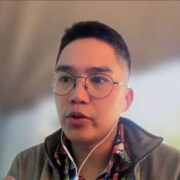Bad actors using social media to target suicidal youth

In September last year, when the owner of a vacant house in a mountainous region of Yamagata Prefecture, in northeastern Japan, drove up to his property to mow the grass, he was surprised to find a tent pitched there.
His son began honking the car’s horn, but no one came out. They unzipped the tent flap and were struck by a foul odor. A dead body and used charcoal briquettes were inside.
It was a girl in her teens from Yamagata Prefecture. The cause of death is believed to be carbon monoxide poisoning.
Investigations revealed that the girl had been taken by car from Yamagata City to the location in Kaminoyama earlier that month and left there.
“I feel pity for her because she was brought all the way here so she could die,” the property owner said.
Hiroki Kishinami, 36, an unemployed man from Fukushima, was arrested and indicted this year on charges including aiding and abetting suicide.
Including the girl, Kishinami is alleged to have aided the suicides and an attempted suicide of five individuals. The other four are a teenage girl and woman in her 20s, both from Fukushima Prefecture, a man in his 20s in Miyagi Prefecture, and a teenage boy in Saitama Prefecture. All cases occurred between June of last year and January of this year.
Although the girl from Fukushima survived, the other four died. Additionally, the Tochigi prefectural police referred Kishinami’s case to prosecutors in August on suspicion that he abducted a high school girl from the prefecture.
Distorted perception
His methods were largely the same. According to the indictment, Kishinami would contact young people who expressed a wish to die in social media posts and invite them to commit suicide together. He would then move the conversation to private messaging apps to lure them out.
Experts say a common motive for such crimes is the perpetrators’ distorted perception of believing they are actually helping people who wish to die, or for sexual purposes.
Kishinami was also indicted on suspicion of committing indecent sexual acts against the Fukushima minor and stealing money from the woman in her 20s by using her cash card. “There’s an aspect where they prey on people’s weakness to gratify their own desires,” said a high-ranking official of the Fukushima prefectural police.
Jiro Ito, representative director of OVA, a Tokyo-based nonprofit that provides counseling online and works to prevent suicides, says young people become caught up in such crimes through social media because they cannot express their pain in real life.
“Unable to vent their painful feelings about the real world, they gravitate toward messages that resonate with their suffering,” he explains, adding that expressing the wish to die on social media is often a cry for help. “If the victims were connected to the appropriate support services, there’d be a chance of assisting them.”
Serial killer Takahiro Shiraishi was arrested in 2017 for luring people on social media to help them act out their suicidal thoughts. Dubbed the Twitter killer, he was convicted of slaying nine people, including four teens, in his apartment in Zama, Kanagawa Prefecture. He was hanged in June 2025.
Prompted by this incident, the Ministry of Health, Labor and Welfare launched a counselling service using social media in collaboration with private organizations in March 2018.
‘Far too many’
There were 275,270 consultations in fiscal 2023, with those in their 20s or younger accounting for 70 percent of the cases in which age was known. OVA itself assisted almost 2,000 people in fiscal 2024, but Ito said, “There are far too many people posting about suicidal thoughts, and our support network is woefully insufficient.”
While suicides in Japan overall have dropped from a peak of 34,427 in 2003 to just over 20,000 in 2024, record numbers of younger Japanese are taking their own lives.
According to data compiled by the health ministry, suicides among females under 20 are surging in Japan. In 2024, the number reached 430, exceeding the 370 for males, 2.6 times higher than a decade earlier and the first time it surpassed male suicides in the same age group.
With junior high and high school students forming the core of this trend, a research group including the National Center of Neurology and Psychiatry published a paper characterizing it as a “quiet crisis” and saying society as a whole must address it.
Social media companies are implementing measures such as displaying counseling hotlines and support information when users post or search for suicide-related content. However, many users employ coded language, leading to a cat-and-mouse game for prevention measures.
IT journalist Yo Mikami points out, “For accounts that attempt to meet individuals who have posted suicidal thoughts in person or try to move conversations to private messaging apps to communicate secretly, more aggressive measures are necessary, such as issuing warnings or suspending their accounts.”
Mariko Ukiyo, executive director of the Social Media Counseling Association, composed of social media operators and psychological counselors, argues that creating a sense of belonging in the real world is necessary alongside social media counseling.
Dedicated
Ukiyo established an “idea high school,” a correspondence support school, in 2022.
Focusing on supporting students who refuse to attend regular school, students meet with a dedicated counselor once a week either via social media or in person. Within the small-group setting, they gradually make friends and begin to build a community.
By regularly chatting with counselors about issues like school subjects they may dislike or favorite celebrities, trust builds, and students start reaching out when they’re truly struggling.
“It’s crucial to maintain connections with people you can talk to in a pinch, and when venting worries, choose someone whose identity is clear rather than an unknown account on social media,” Ukiyo said.

















